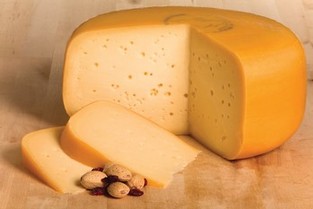
Gouda Cheese
Author: Marthinus Strydom
Category: Cheese Making
Gouda cheese making is a traditional process that involves curdling milk, cutting the curds, and pressing them into distinctive round shapes before aging for several weeks to develop its signature nutty and creamy flavor.
Method
- Warm the milk up to 32º Celsius or 90º Fahrenheit.
- Add the Flora Danica culture then stir thoroughly.
- Cover and leave it to ripen for 15 minutes.
- Add the Calcium Chloride and stir.
- Add in the diluted Rennet then leave it to set for 45 minutes to 1 hour or until you have a clean break.
- Carefully cut the curd into 1cm cubes
- Leave it to rest for an extra 10 minutes
- Pour off a third of the whey.
- Slowly add 80ºC/175ºF water to the curd until the temperature reaches 33ºC or 92ºF.
- Stir continuously then leave it to rest for 10 minutes.
- Drain off the whey to the level of the curds.
- Slowly add more water at 80ºC or 175ºF to the curds until the temperature reaches 38ºC or 100ºF.
- Leave the curd for 30 minutes.
- Pour out all remaining whey.
- Move the curds into a cloth lined Tomme mould immediately while making sure to handle the curds very gently so as not to break them
- Press the curd at 10kgs for about 30 minutes.
- Remove, flip and then redress.
- Press again at 20kg for 30 minutes.
- Remove, flip and then redress.
- Press once more at 25kg for 12 hours.
- Remove and then unwrap the cheese
- Soak the cheese in saturated brine for 12 hours and turn the cheese every 3 hours to ensure even coverage. Use cheese salt.
- Remove the cheese and pat dry.
- Air dry at 10°C for 3 weeks.
- Wax or Vacuum Seal
- Age the cheese at 10º Celsius or 50º Fahrenheit for 3 to 9 months.
- Turn cheese about 3 to 4 times a week.
10 liter whole cow’s milk
0.25 tsp flora danica or chn-22 culture
5 ml rennet diluted in a quarter of water
0.50 tsp calcium chloride calcium chloride diluted in 1/4 cup cool nonchlorinated water
